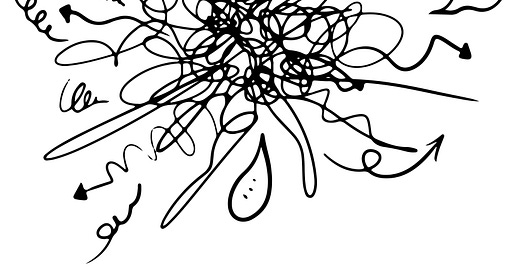New leaders often confide their biggest concerns to me. The most common fear? Not being good at strategy. They worry if they don’t get the strategy right, they’ll be seen as incompetent, a fraud. Strategy seems mysterious and difficult.
We think it’s on us alone as leaders to create strategy. We get especially focused on the output of that activity — the strategy document. We think this means locking ourselves in a room with only a cup of coffee and some spreadsheets to keep us company. It’s what we’ve seen over and over. Strategy documents seem to mysteriously get created and shared at an all-hands.
This isn’t to discount the importance of strategy. It’s absolutely critical. There’s just a far bigger danger to those company goals, one we often overlook.
The biggest threat to company goals? A poorly functioning leadership team.
The most brilliant strategy can’t overcome a divided leadership team.
When we fixate on being “good at strategy” we focus on making the right decision in our area. We’re focused on a discrete part, rather than the whole. Organizational leadership is about navigating the whole system.
Leadership isn’t something you do alone, it’s a collective activity. When we act as individuals rather than one unit we put our hopes for the business at risk.
The symptoms of divided leadership teams:
Siloed decisions
Competition between peers
Fights over resource allocation
Misaligned incentives
Back chatter
Factions form
Unproductive conflict
All create barriers to reaching outcomes.
Siloed decisions mean critical information isn’t flowing between all parts of the business. Competition can lead to selfish behavior like hoarding information or resources. Fights over resources means making decisions that are good for our area but overall bad for the company. It also means leaders strive for more influence to curry favor and get more resources. When incentives are created without a systems mindset friction rises between areas. Behind-the-scenes chatter is a sign of a fear-based culture where leaders try to get the “right” answer rather than ask hard questions and have thorough conversations. Factions encourage leaders to engage in negative behavior to reach their goals. An us vs them mentality can set in, dividing the team and hampering our ability to act. Unproductive conflict means we’re distracted from the real work as we go round and round in circles trying to prove who’s right. Interpersonal conflict rises. Scuffles break out over how to do the work rather than finding ways to increase our leverage as a team. The loudest voice wins.
When we don’t see the leadership team as a proxy for the business, our goals remain out of reach. When we don’t move as one unit we’re unable to meet market changes. When we operate as separate entities we’re unable to develop new strategies to respond to new challenges. When we compete with each other we get distracted from important initiatives. When we don’t operate as one system we act from ego and our goals remain out of reach.
Here’s an example. A company faced a downturn and a commoditized market. Competition was tough. The business strategy changed again…and then again. Revenues flatlined, something had to be done. Leaders were told to eliminate a % of their team. Employee’s names were submitted without further conversation. In some cases, top performers were cut while low performers remained. Who got cut largely depended on their relationship with the leader in their area. Key collaborators were cut leaving their counterparts in other areas without partners. Competition and fights over priorities increased. Worried about making a misstep, leaders remained silent in meeting, only breaking their silence to agree. Unable to make progress, leader after leader left. Goals remained elusive. Revenue went into a tailspin. Finally recognizing the need to work as a cohesive unit allowed them to reset.
Strategy is sometimes a problem. A misaligned leadership team is just as big of a threat. When you’re not meeting goals don’t forget to look at how your leadership team is operating.
What to do if you recognize these symptoms
Before you tweak the strategy or produce any more documents, take a good look at the leadership team. There’s a good chance it’s functioning like a collection of individuals tending to their own concerns. Invest time and resources into shaping the leadership team culture so that it functions like a cohesive unit.
Get everyone to recognize that how you’re working isn’t working. Then collaborate to identify key values and operating principles for the team. This will take time so it’s tempting for the main leader to hide away creating this document. Resist the urge! Remember, leadership is a collaborative activity, not a singular endeavor. The process of developing this team operating system allows them to feel ownership and helps them begin acting like a more effective group. Allocate time to focus on the leadership team culture at your next offsite. Bringing in an outside facilitator can grease the conversational wheels.
As a facilitator, I’ve helped teams come together to make agreements on how they want to operate as a unit. Even better, to see them reach long-held organizational goals and navigate challenges more easily.
If you want to foster a more cohesive team, I’d love to talk with you about what it would look like. Book a time a time to chat.
If you want a more in-depth way to assess how the leadership is doing, I’ve created an audit to give you a snapshot. If you’re a CEO, COO, or head of a large department, email me and I’ll send it over.
If you want to talk about other ways I can support you or the team, please get in touch.




